Imagine your garden as a storybook, each element a character playing its part. A dry creek bed is like a flowing river in this narrative—except it’s made of stones, gravel, and plants instead of water.
It’s not just a functional feature to manage drainage; it’s a stunning landscape element that brings texture, movement, and charm to your outdoor space.
What is a Dry Creek Bed and Why Should You Consider One?
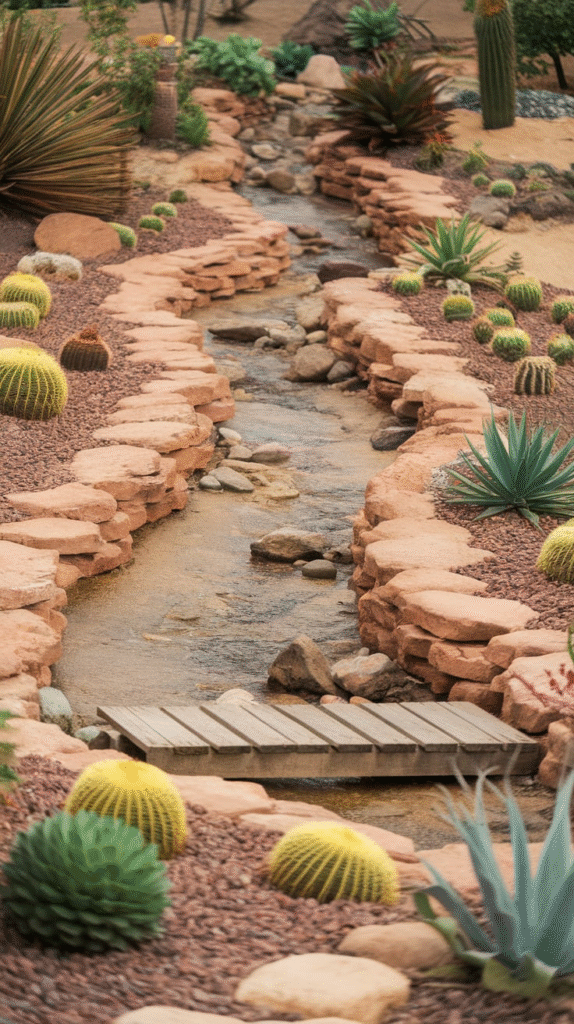
Before we jump into ideas, let’s talk about what exactly a dry creek bed is. Think of it as a man-made watercourse made with stones, gravel, pebbles, and sometimes plants to mimic a natural stream without water. It is a great way to solve drainage problems, prevent soil erosion, and add visual interest to your landscape.
Picture your garden after a heavy rainstorm—normally, water can pool or wash away your soil. A dry creek bed guides that water safely and artistically through your yard, making it both a practical and beautiful solution.
From a practical perspective, a dry creek bed is a low-maintenance drainage solution. From an aesthetic perspective, it’s a natural, organic feature that invites you to slow down and enjoy the subtle sounds of trickling water—when it rains, of course.
1. Natural Stone Dry Creek Bed: Keep It Classic
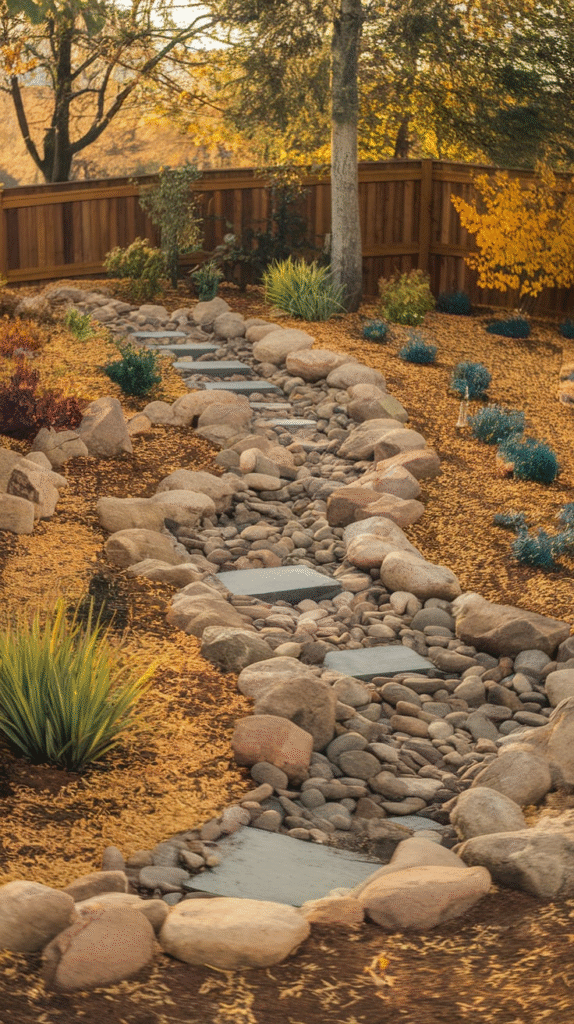
There’s something timeless about a dry creek bed made with natural stones. Smooth river rocks or a mix of various sized stones laid out with care can create an authentic look.
I recall building one along the side of my house where water used to pool—once the stones were in place, not only did the water flow smoothly, but the whole garden suddenly felt more “complete.”
Choosing stones of different sizes mimics a real creek, with larger boulders acting as “anchor points” and smaller stones filling the gaps. Scatter some moss or shade-loving plants along the edges, and you’ve created a natural oasis that blends with your garden seamlessly.
2. Pebble and Gravel Bed for Minimalist Gardens
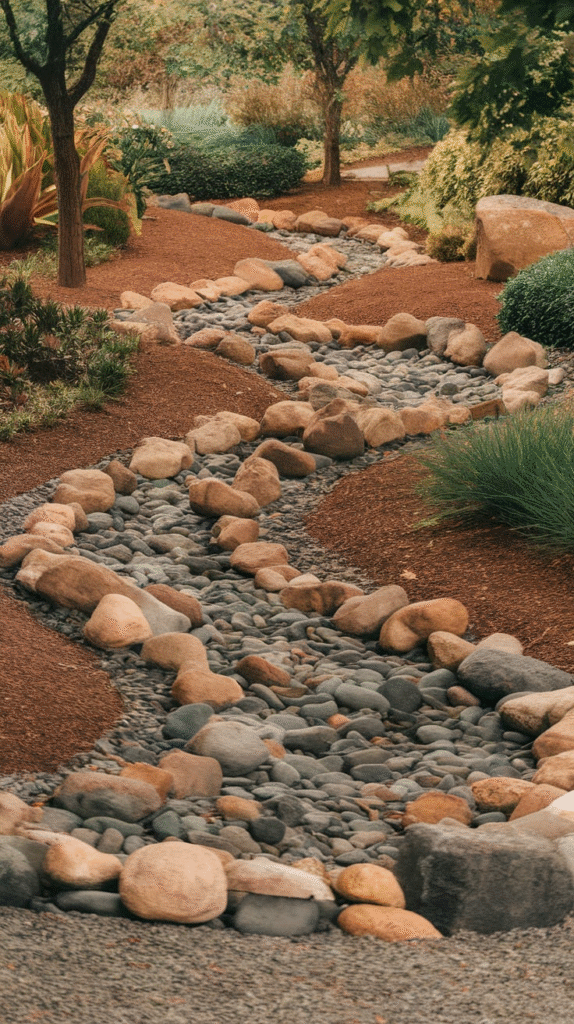
If you prefer clean lines and simplicity, a pebble and gravel dry creek bed might be your best bet. It’s minimalist, modern, and fits well in urban landscapes or small backyards. Light-colored gravel can brighten shaded areas, while darker pebbles add drama.
A trick I learned while installing this style was to choose two contrasting colors—for example, white pebbles for the creek bed and dark gravel for the surrounding area. This contrast creates a visual “river” flowing through your yard.
3. Incorporate Native Plants Alongside Your Creek Bed
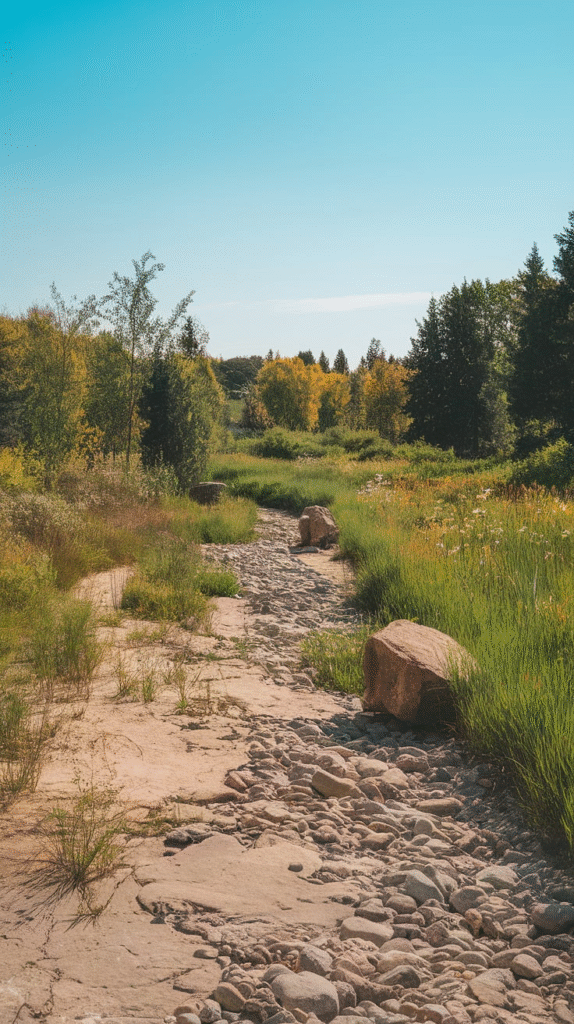
Dry creek beds don’t have to be only about rocks and gravel. Adding native plants that thrive in rocky, dry conditions can soften the hard edges and bring life to the design. Think grasses like blue fescue, succulents like hens-and-chicks, or flowering plants such as coneflowers.
Planting natives also attracts local pollinators, making your creek bed a small wildlife haven. I like to think of this as inviting nature to your garden party, making it more vibrant and alive.
4. Use Driftwood and Logs for a Rustic Touch
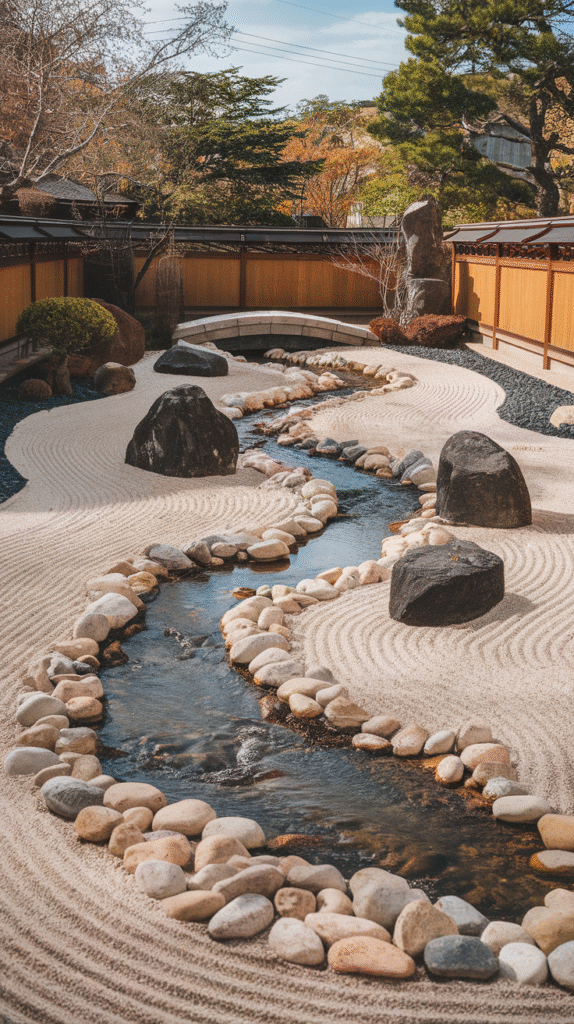
Want to add a rustic, woodland feel? Scatter some driftwood, logs, or large branches alongside the stones. This adds texture, height variation, and a storytelling element to your creek bed.
In my own garden, I found an old fallen branch and nestled it among the stones. It became a focal point and a perfect perch for a birdbath nearby. This simple addition created a cozy, woodland nook that guests always comment on.
5. Lighting the Dry Creek Bed for Nighttime Drama

Imagine your dry creek bed illuminated softly at night, casting shadows and highlighting textures. Using low-voltage LED lights or solar-powered stake lights along the creek bed can create a magical ambiance.
This is perfect if you entertain outdoors or simply want your garden to look inviting after dark. The light plays off the stones, giving a gentle glow that mimics moonlight on water. It turns your dry creek bed into a landscape jewel when the sun sets.
6. Curved vs. Straight Lines: Design Choices for Flow

Most natural creek beds have curves and bends that mimic flowing water. A winding path of stones looks organic and relaxed. However, if your garden is more contemporary, a straight dry creek bed with sharp edges can look sleek and intentional.
I once designed a narrow, curved creek bed through my flower garden. It felt like the garden had a heartbeat, a pulse that led the eye from one spot to the next. The curves made it more inviting, while a straight line might have looked rigid.
7. Mixing Different Stone Types for Texture
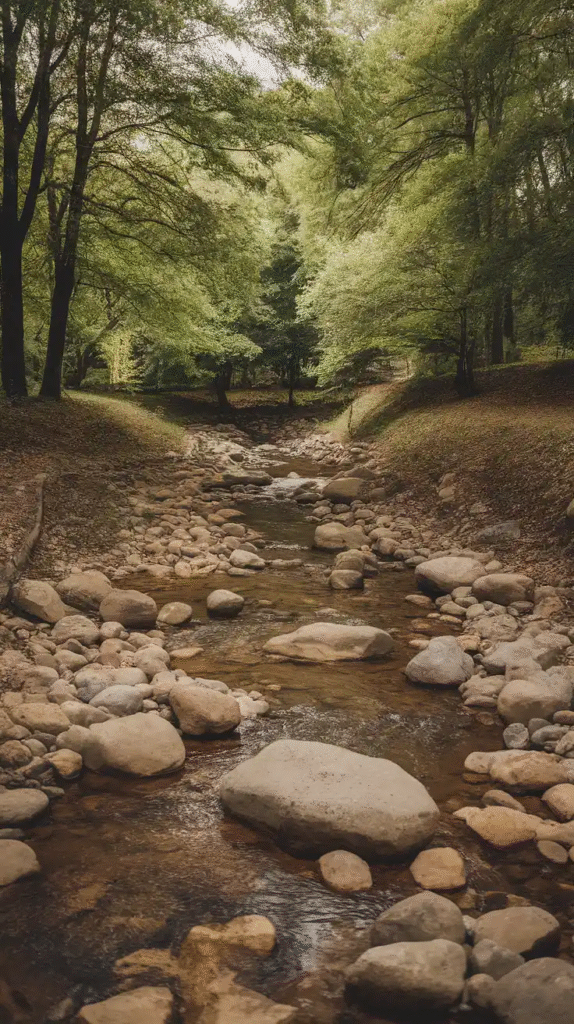
Mixing different types of stones—like granite, sandstone, and river rocks—adds layers of texture and interest. Varying colors, sizes, and shapes create a natural, unplanned look.
During a weekend project, I sourced leftover stones from a neighbor’s landscaping and mixed them into my creek bed. The unexpected combination gave it character, like a patchwork quilt made by nature itself.
8. Incorporate a Small Water Feature for Contrast
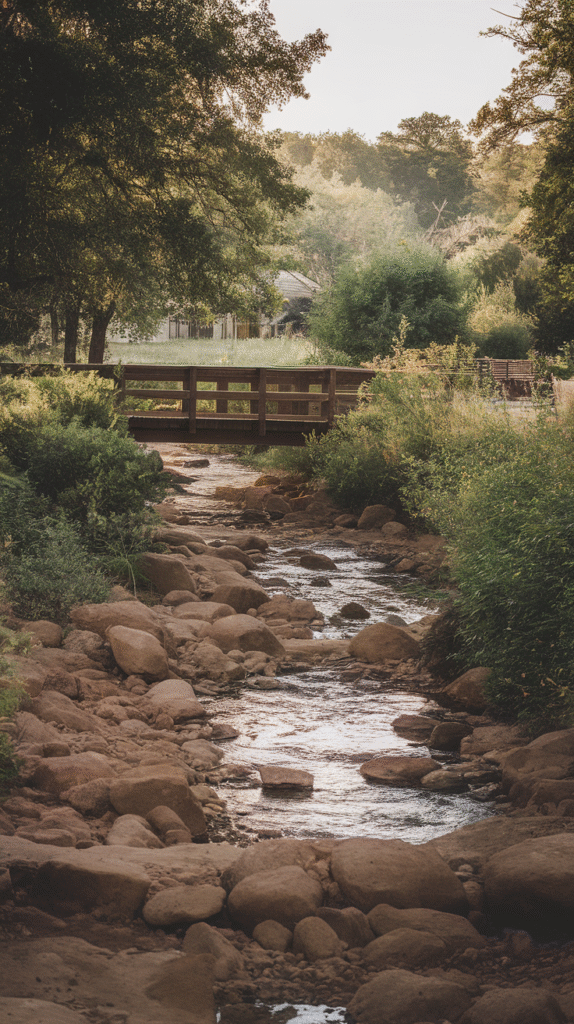
Even though a dry creek bed is typically dry, adding a small trickling water feature at the start or end can add sound and life to your design. A tiny pump can circulate water over stones, creating a mini waterfall or bubbling rock.
This contrast between dry and wet elements offers a sensory experience. I installed a small water bowl at the head of my creek bed, and suddenly, it was a gathering spot for birds and butterflies—a lively addition to an otherwise “dry” feature.
9. Use Mulch and Soil to Soften the Edges
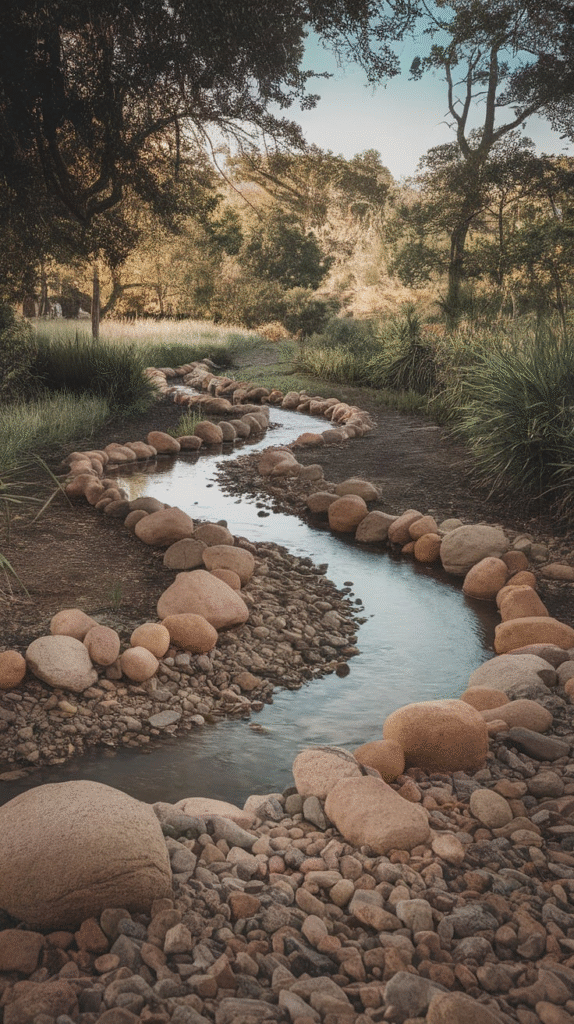
To avoid a harsh divide between the creek bed and lawn or flower beds, use mulch or rich soil on the edges. This helps plants take root and softens the transition.
One time I neglected this step, and the creek bed looked like a scar on the landscape. Adding mulch and planting soft grasses quickly healed the divide, making the whole yard flow better.
10. Create a Dry Creek Bed on a Slope for Functional Beauty
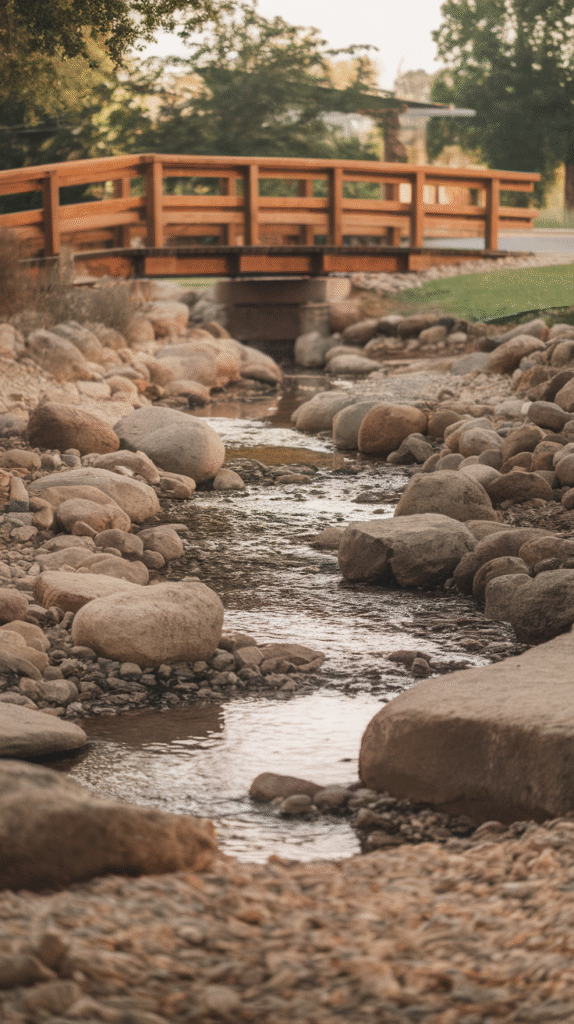
If your yard has a slope, a dry creek bed is a perfect erosion control solution. It guides rainwater downhill safely while adding beauty.
I installed one in my sloping backyard, and it was like painting a silver ribbon down the hill. It kept soil in place and gave me a visual guide for where to plant erosion-resistant shrubs.
11. Integrate Seating Areas Nearby for Relaxation
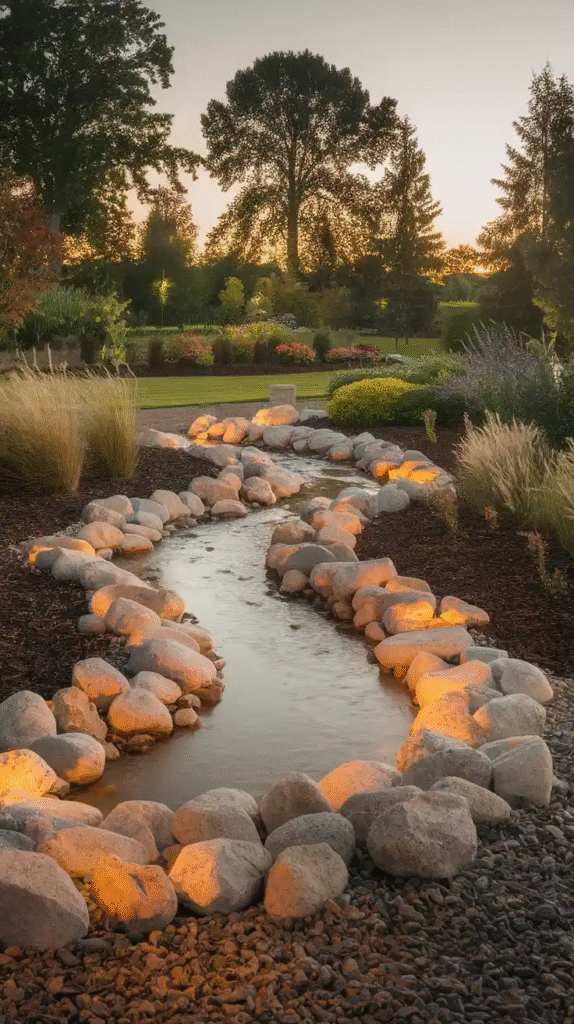
A dry creek bed can be a calming backdrop for a seating nook. Place benches, Adirondack chairs, or even a hammock nearby to create a restful retreat.
I like to call this “listening to the dry creek” — even without water, the stones and plants create a quiet space to unwind, meditate, or read. It’s the kind of secret garden feeling we all crave.
12. Use Concrete or Pavers for a Modern Twist
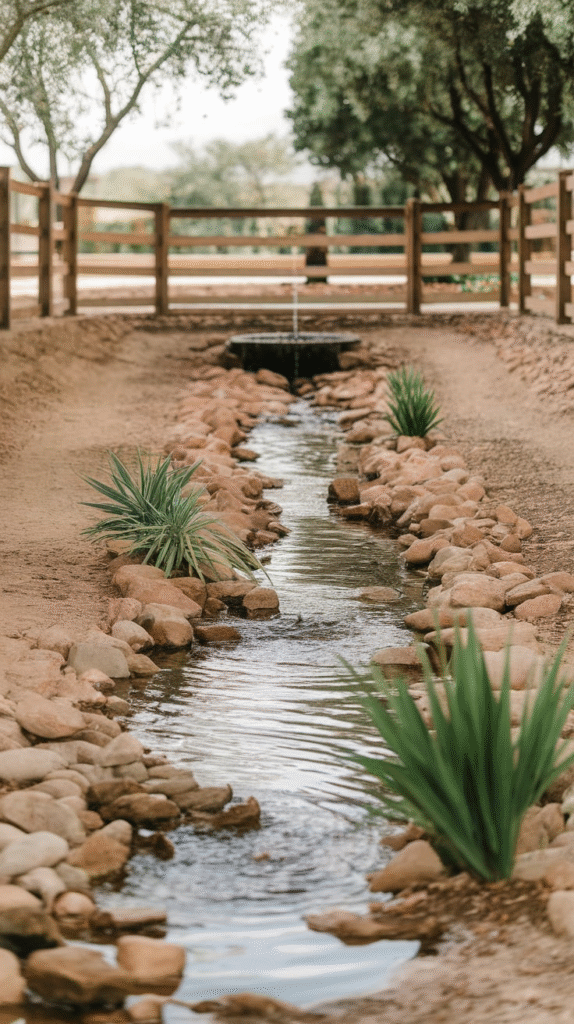
For a more urban or modern look, incorporate concrete stepping stones or pavers in the dry creek bed. The smooth, geometric shapes contrast beautifully with the natural stones and gravel.
I helped a friend with this design, and the pavers created a stepping path through the creek bed, making it both functional and sculptural.
13. Line the Bed with Boulders for Definition
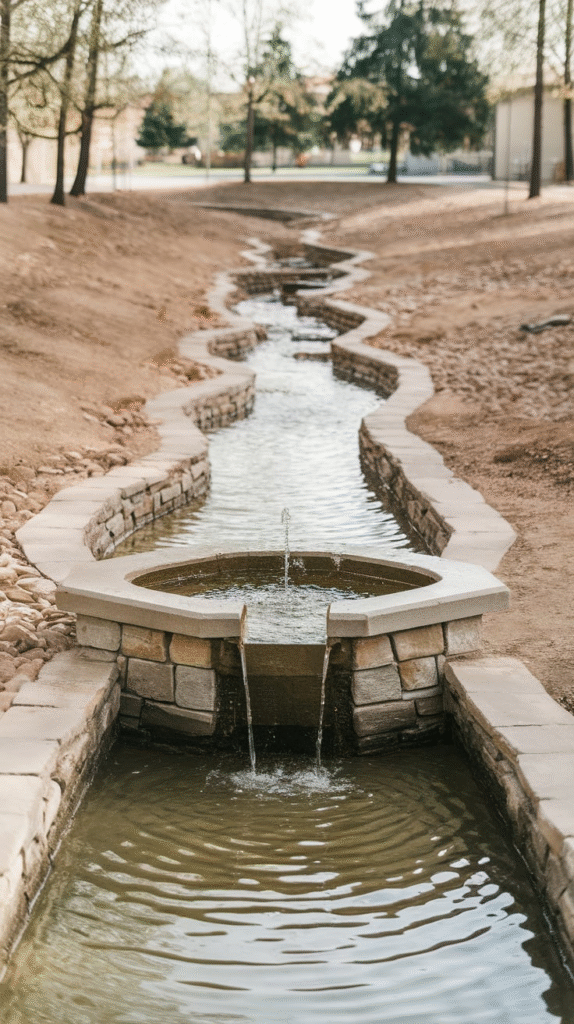
Large boulders or rocks can act as natural borders for your creek bed. They prevent gravel from spilling into adjacent areas and create a strong visual frame.
A rule of thumb: place boulders at intervals, as if nature placed them herself. This breaks up monotony and anchors the design in place.
14. Use Colorful Stones for a Unique Statement
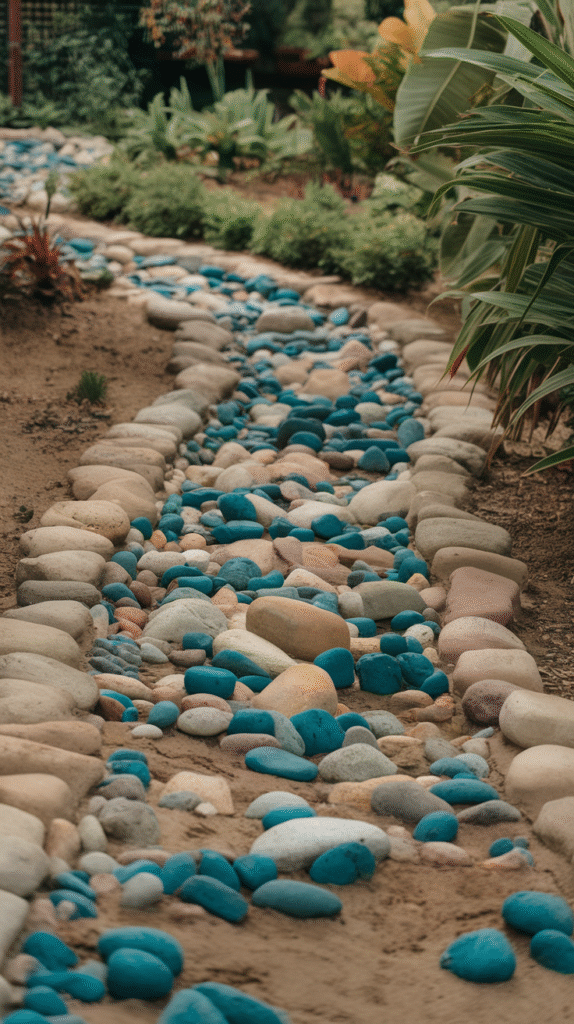
Why not think outside the box? Use colored stones or glass pebbles to add a splash of color and personality. Blues, greens, or reds can evoke the feeling of water, jewels, or an abstract river.
While installing one with turquoise glass stones, I was amazed at how light played off the colors, making the creek bed feel like a hidden treasure.
15. Plant Moss or Groundcovers for a Soft Carpet Look
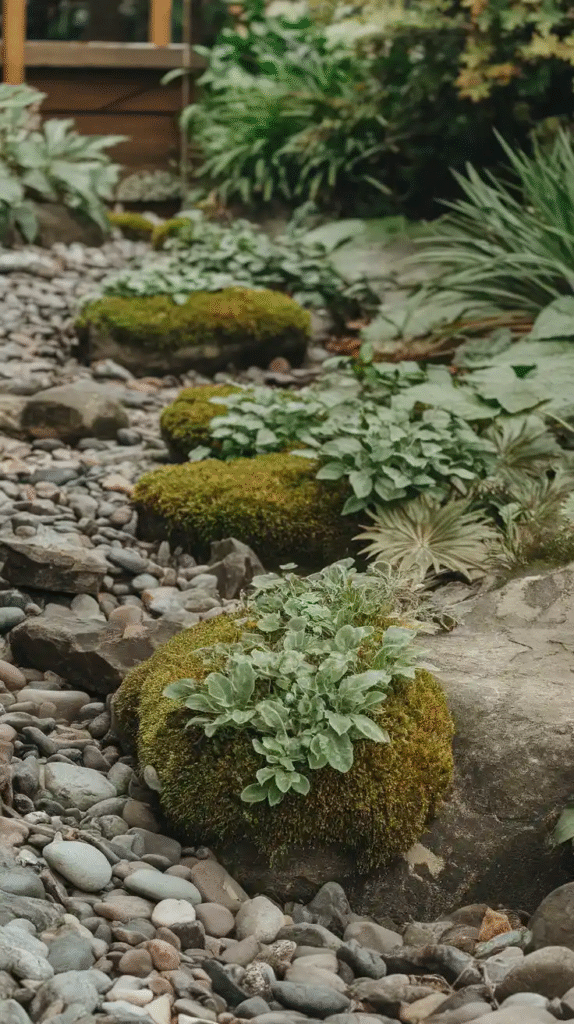
Between stones or on edges, plant moss or low-growing groundcovers like creeping thyme or Irish moss. These plants soften the hardscape and add lushness.
Moss, in particular, thrives in shady, moist areas and brings a fairy-tale vibe. Walking barefoot near a mossy creek bed feels like stepping into a storybook forest.
16. DIY Dry Creek Bed Kits for Easy Installation
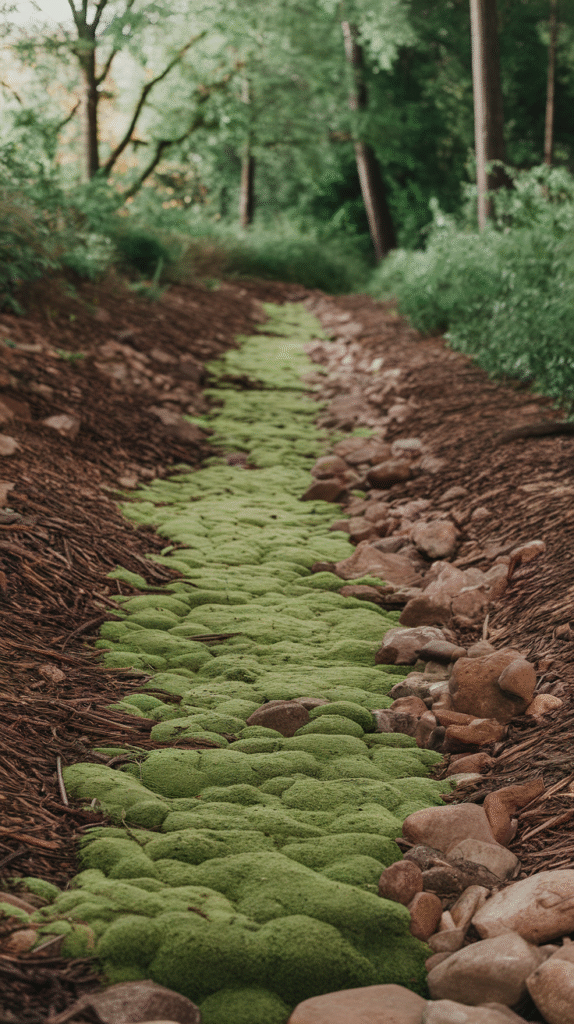
If you’re a beginner or want to speed up the process, consider DIY dry creek bed kits that include stones, gravel, and instructions. These kits are convenient and often customizable.
A friend used a kit for her small balcony garden, and it transformed the space with minimal effort. It’s a great way to get started without the guesswork.
17. Combine with Rock Gardens for a Cohesive Look

Dry creek beds pair naturally with rock gardens. Use similar stones and plant choices to create a seamless transition from one feature to another.
This combination feels like a natural mountain stream and wild hillside rolled into your backyard. It’s a rugged, beautiful theme that’s surprisingly easy to maintain.
18. Edging Materials: Metal, Wood, or Stone?
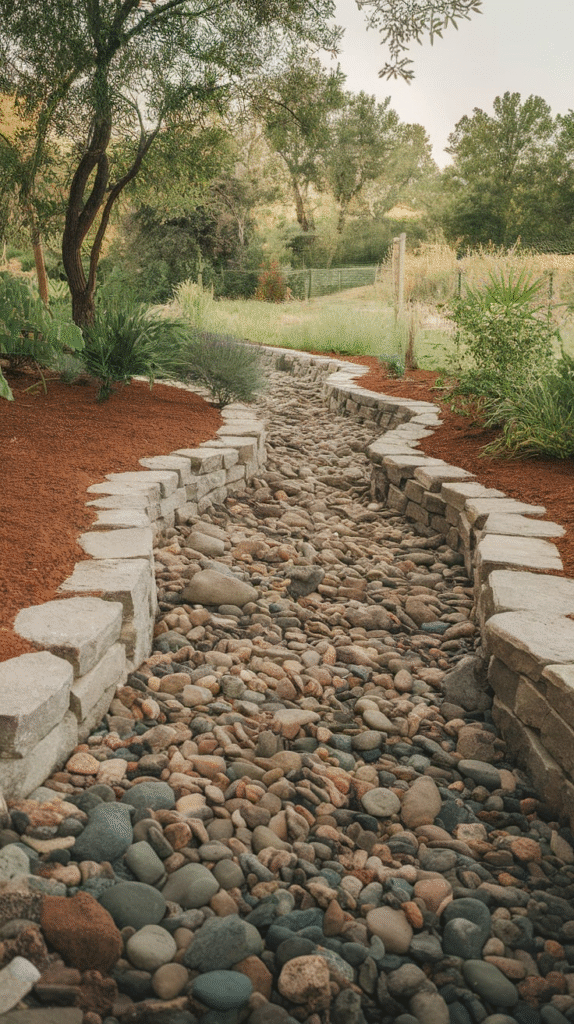
The choice of edging material can define your dry creek bed’s style. Metal edging offers a crisp, modern look, wood gives warmth and rustic charm, and stone edging blends naturally.
When I used metal edging, the creek bed had a clean, contemporary feel. Wood edged one of my friends’ beds, making it cozy and inviting.
19. Seasonal Maintenance Tips for Longevity
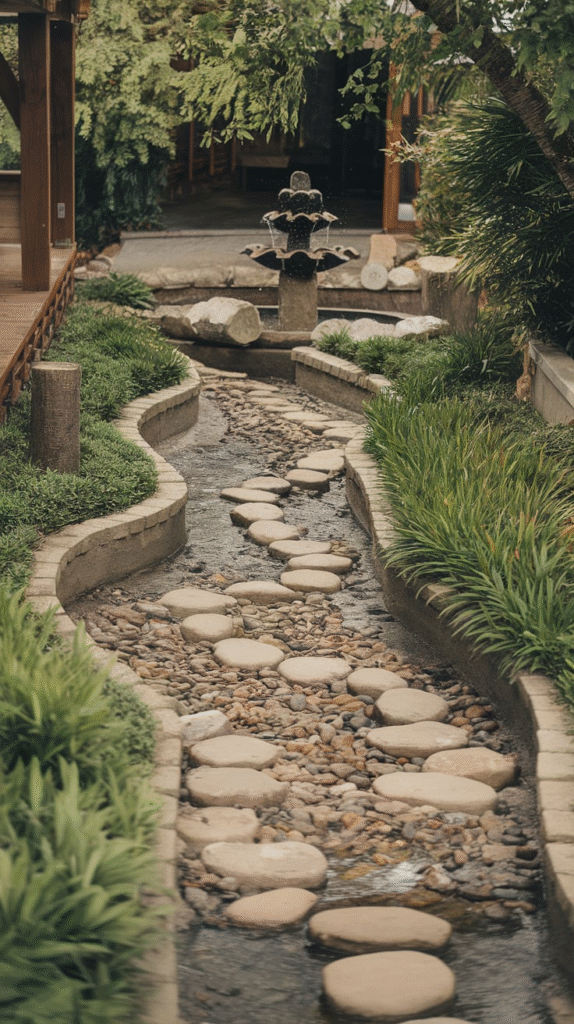
A dry creek bed is low maintenance but not no maintenance. Remove debris after storms, reposition stones if shifted, and prune plants as needed.
In spring, I always check for weeds that sneak in between the stones. Regular upkeep keeps the bed looking fresh and working properly.
Conclusion
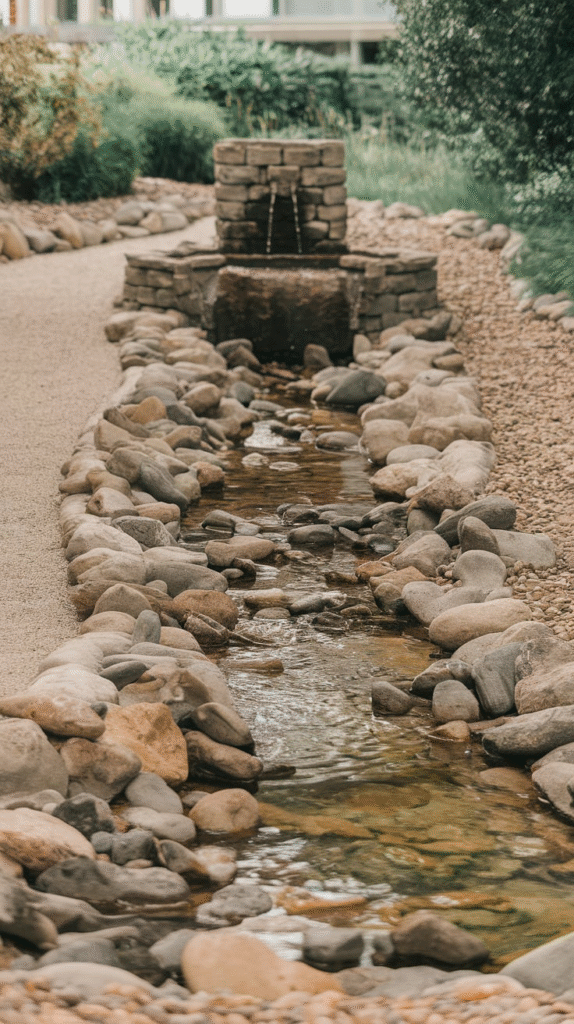
Installing a dry creek bed is like adding a chapter to your garden’s story—functional yet beautiful, practical yet poetic. Whether you want a natural woodland stream, a sleek modern line, or a wildflower-lined riverbed, these 19 ideas give you the tools to create something uniquely yours.
Remember, the best dry creek bed is one that reflects your style, meets your drainage needs, and invites you to enjoy your outdoor space every day. Start small, experiment with stones and plants, and soon your garden will be singing a silent song of stone and earth.

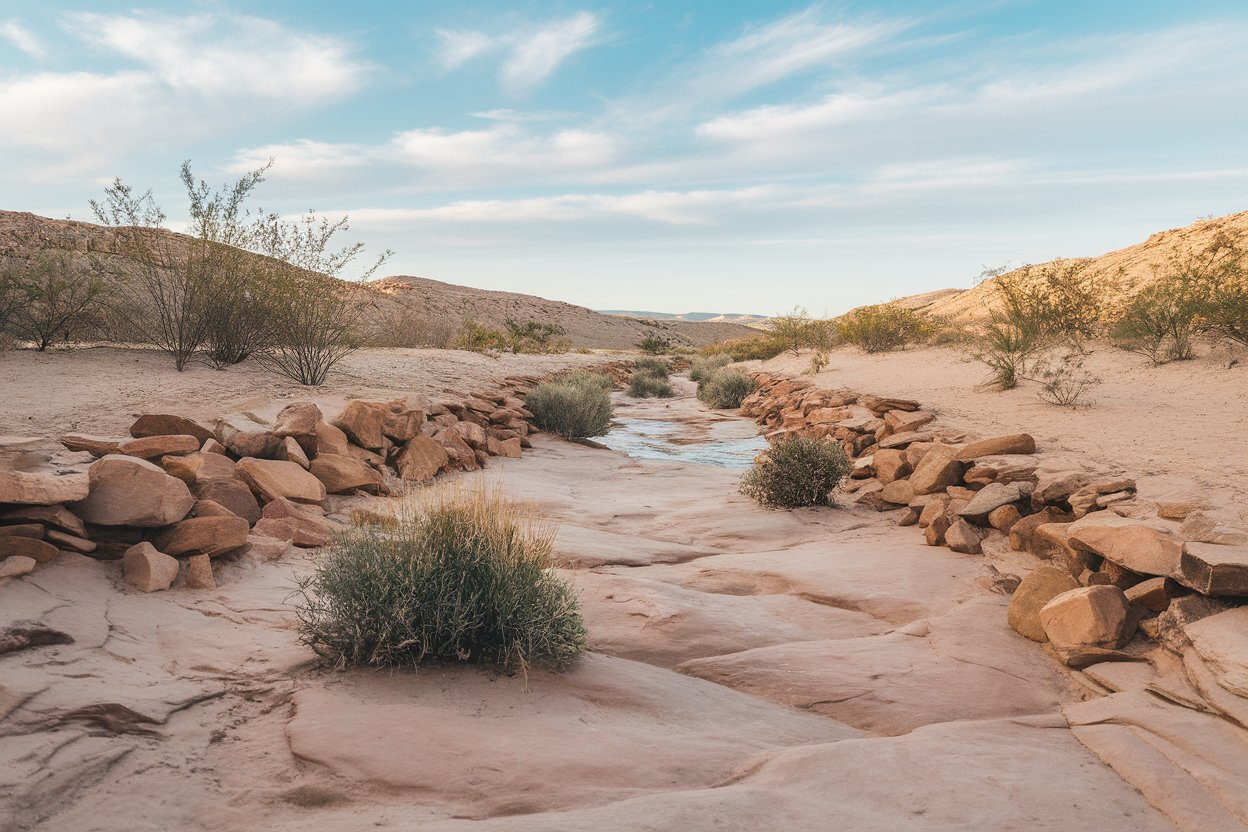
Leave a Reply